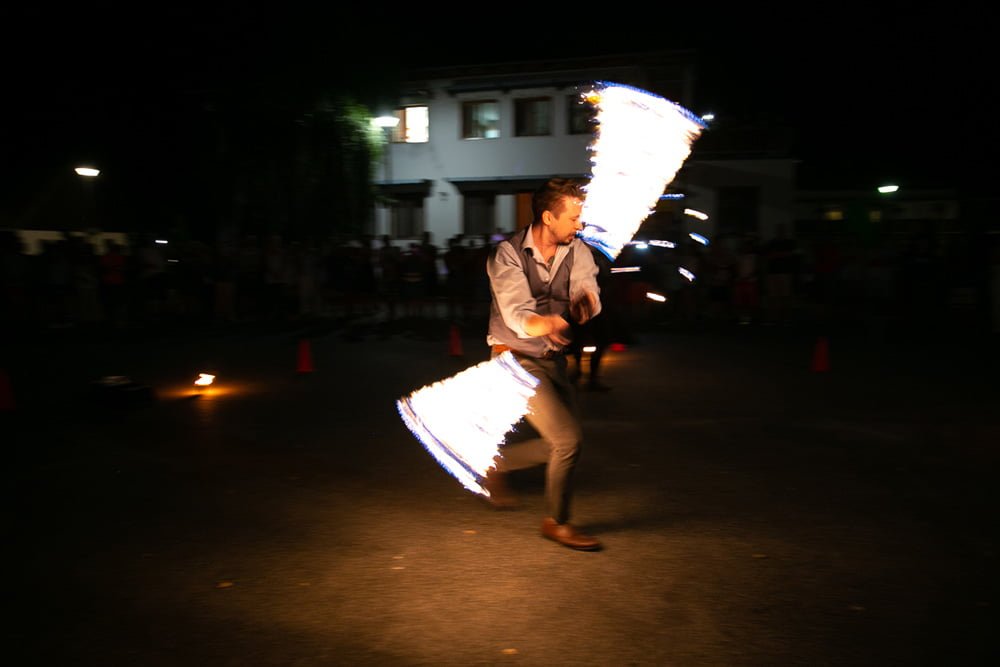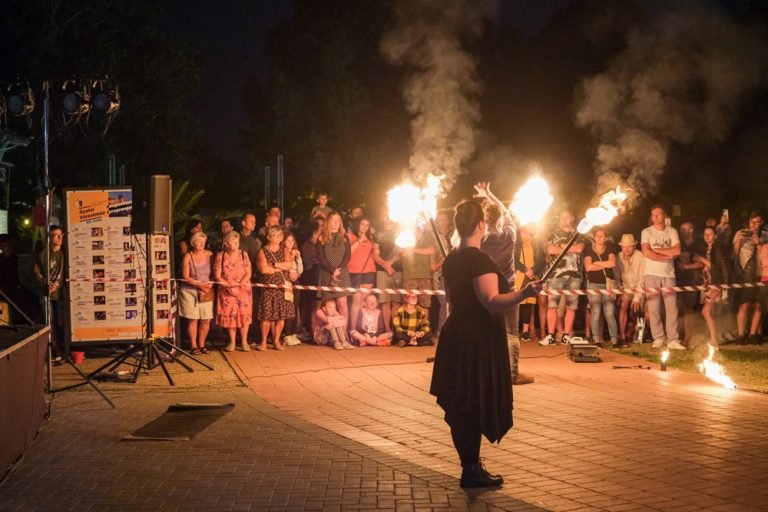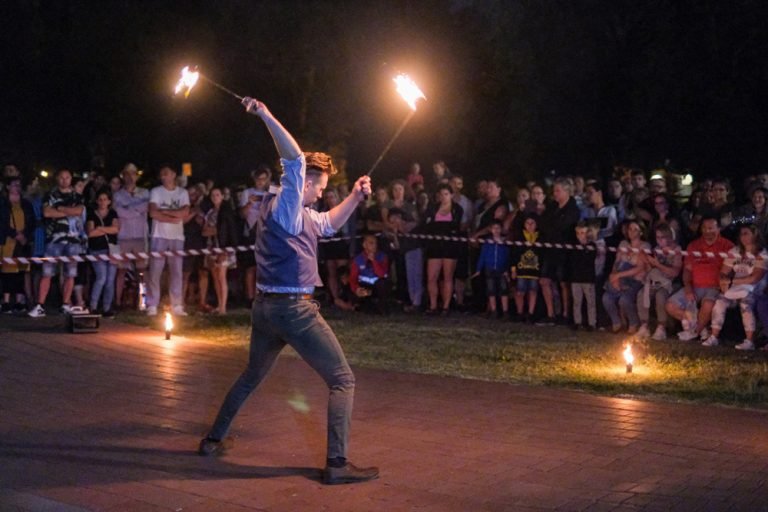Fire juggling and fire eating are two breathtaking performance arts that combine danger, skill, and visual spectacle. While both involve the manipulation of flames, they require vastly different techniques, physical tolerances, and disciplines. In this article, we’ll compare fire juggling vs. fire eating, highlighting the unique artistry and safety demands of each, to better understand what sets them apart—and what makes both so compelling.
Fire Juggling: Precision and Performance in Motion
Fire juggling is the art of manipulating flaming props—typically torches or clubs—in rhythmically timed, choreographed sequences. It demands a high level of physical coordination, timing, and spatial awareness.
Key Skills for Fire Jugglers
- Juggling Technique: At its core, fire juggling builds on traditional juggling methods, adding the complexity of working with flames. Performers must maintain consistent height, rhythm, and spacing while managing the added risk of live fire.
- Pattern Variation: Skilled jugglers often introduce complex visual patterns—such as cascade, reverse cascade, and multiplex throws—to keep the act dynamic and engaging.
- Dexterity and Control: Unexpected factors like wind or uneven ground require quick reflexes and refined hand-eye coordination to adapt in real time without compromising safety.
Fire juggling is especially popular at outdoor festivals and stage events, where the act’s combination of motion, rhythm, and firelight creates a visually captivating performance.
“Fire juggling turns athleticism into art—where each toss becomes a calculated risk, and each catch, a victory over chaos.”
Fire Eating: The Intimate Dance with Flame
Fire eating is a more intimate and daring act that involves placing a lit torch in or near the performer’s mouth and extinguishing the flame through a controlled technique. This performance is less about motion and more about psychological endurance and physical tolerance.
Key Skills for Fire Eaters
- Heat Resistance: Fire eaters train to withstand proximity to high temperatures. Even with perfect technique, performers must develop a physical and mental tolerance for heat exposure.
- Controlled Breathing: One of the most critical skills, fire eaters must learn to time their breath to avoid inhaling heat or fumes, which can cause burns or serious injury.
- Extinguishing Technique: Fire eaters use a combination of breath control, moisture, and timing to smother the flame safely using the mouth—a delicate technique that demands years of practice.
Unlike fire juggling, fire eating often draws the audience closer, creating a suspenseful and intimate viewing experience. The illusion of consuming flames is both terrifying and awe-inspiring.
“Fire eating blurs the line between performer and flame—it’s an act of mastery over fear and heat.”
Comparing Fire Juggling and Fire Eating
Although both are rooted in the same elemental medium, the approach, execution, and risks of fire juggling vs. fire eating are distinctly different. Here’s how they compare:
| Aspect | Fire Juggling | Fire Eating |
|---|---|---|
| Focus | Movement, coordination, visual spectacle | Heat tolerance, precision, psychological intensity |
| Props | Flaming torches or clubs | Small torches, often cotton-wicked |
| Performance Style | Energetic, choreographed, often at a distance | Intimate, suspenseful, close-up |
| Risk Type | Burns from dropped props, environmental hazards | Internal burns, inhalation injuries |
Safety and Training: A Non-Negotiable Priority
Both fire juggling and fire eating require professional training and strict safety protocols. Never attempt these skills without guidance from experienced performers and proper gear.
Basic Safety Guidelines:
- Training: Learn from a qualified fire arts instructor before performing publicly.
- Protective Gear: Fire-resistant clothing, gloves, and tied-back hair reduce the risk of burns.
- Safety Crew: Always have a designated person with a fire extinguisher, wet towels, and emergency response training.
- Fuel Safety: Use only fuels approved for fire performance, and store them away from the performance area.
Conclusion: Two Flames, One Passion
Whether it’s the rhythm and grace of fire juggling or the raw intensity of fire eating, both disciplines demonstrate the incredible skill, focus, and bravery of fire artists. While they differ in technique and presentation, they are united by a shared respect for the fire and a commitment to pushing the boundaries of performance art.
Next time you attend a fire show, take a moment to appreciate the years of training, the split-second timing, and the fearless artistry behind every flame.
Book a fire performer today to bring unforgettable excitement to your event—whether it’s the dynamic choreography of fire juggling or the spellbinding suspense of fire eating.




